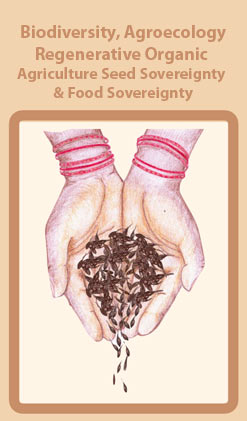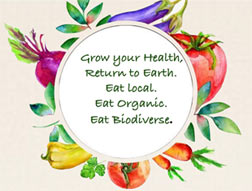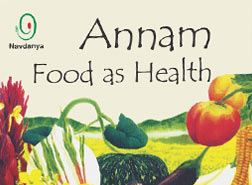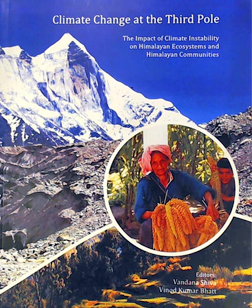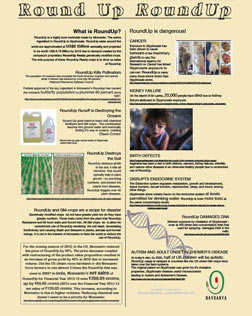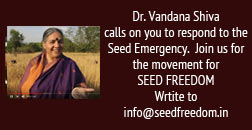Regenerating Living Carbon in the Soil through Organic Farming
Soil organic matter comprises an accumulation of partially disintegrated and decomposed plant and animal residues and other organic compounds synthesised by the soil microbes as the decay occurs. Such material is continually being broken down and re-synthesized by soil microorganisms. Consequently, organic matter (soil carbon) is a rather transitory soil constituent, lasting from a few hours to several hundred years. is constituent required maintenance by the regular addition to the soil of plant and/or animal residues. To get rid of adverse effect from climate change maintenance of soil carbon is very important and can be done only by organic agriculture.
Increase in total carbon build up due to organic farming than chemical farming was studied under different agro-ecosystems. e result showed an additional increase of 62.5 to 83 μg g-1 soil carbon in organic agriculture (Table 1) irrespective of the crop growth. In general, the carbon build up was more under humid agro-ecosystems. e additional C build up was more under organic agriculture would definitely help in better environment in soil for microbial growth,
nutrient recycling and moisture retention of the soil. It also helps in reduction of soil erosion especially under arid and semi-arid areas.
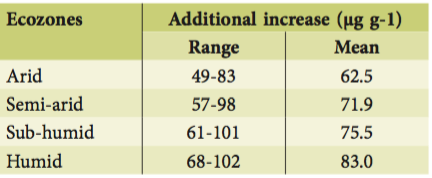
*average of 10 farms in each agro ecosystems
The relationship between living seed, living soil, and the life giving sun is the cycle of living carbon. Living carbon is very different from dead, fossilised carbon.
The extraction of fossil fuels(dead carbon) from the earth, burning it, and putting uncontrollable emissions into the atmosphere is the rupture of the carbon cycle, and through it a destabilisation of climate systems.
All the coal, petroleum, natural gas we are burning and extracting was formed over 600 million years. We are annually burning up 20 million years of nature’s work annually.
But dependence on dead fossil carbon is also responsible for creating scarcity in living carbon, which reduces availability of food for humans and for the soil organisms. is scarcity translates into malnutrition and hunger on the one hand and desertification of the soil on the other. Chemical agriculture intensifies chemicals and capital inputs, while reducing the biodiversity, biomass, and nutrition that the seed, the soil, the sun can produce.
To x more living carbon from the atmosphere, we need to intensify our farms and forests biologically, in terms of both biodiversity and biomass. Biodiversity and biomass density produces more nutrition and food per acre as we have sown in the Navdanya report “Health per Acre”, thus addressing the problem of
hunger and malnutrition. It also increases not just the living carbon in the soil, it increases all other nutrients and the density of beneficial organisms.
The soil on Navdanya’s Organic Farm in Doon Valley has increased soil organic matter by 100%. Soil organic matter is now 2.2 tonnes per ha
Organic farming - working with nature - takes excess carbon dioxide from the atmosphere, where it doesn’t belong, and through photosynthesis, puts it back in the soil where it belongs. It also increase the water holding capacity of soil, contributing to resilience in times of more frequent droughts, floods and other climate extremes. Organic farming has the potential of sequestering 10 Giga tons of carbon dioxide, equivalent to the amount needed to be removed from the atmosphere to keep atmospheric carbon below 350 parts per million, and the average temperature increase of 2 degrees centigrade. We can bridge the emissions gap through ecological agriculture now, not at some point in the future, through ecological agriculture, working with nature.
And the more biodiversity and biomass we grow, the more the plants x atmospheric carbon and nitrogen, and reduce both emissions and the stocks of pollutants on the air. Carbon is returned to the soil through plants. at is why the connection between biodiversity and climate change is an intimate connection.
e more the biodiversity and biomass intensification of forests and farms, the more organic matter is available to return to the soil, thus reversing the trends towards desertification, which is the primary reason for displacement and uprooting of people and the creation of refugees (Source: Navdanya Manifesto Terra Viva : Our Soils, our Commons, our Future)
To repair the broken carbon cycle we need to turn the seed, the soil the sun to increase the living carbon in the plants and in the soil. We need to remember that living carbon gives life, dead fossil carbon is disrupting living processes. at with our care and consciousness we can increase living carbon on the planet, and in- crease the well being of all. e more we grow it, the more we have. On the other hand, the more we exploit and use dead carbon, more pollution we create, and the less we have for the future. Dead carbon must be le underground. is is an ethical obligation and ecological imperative.
is is why the term “decarbonisation” without qualification and distinction between living and dead carbon is scientifically and ecologically inappropriate. If we decarbonised the economy, we would have no plants, which are living carbon. We would have no life on earth which creates and is sustained by living carbon. A decarbonised planet would be a dead planet.


